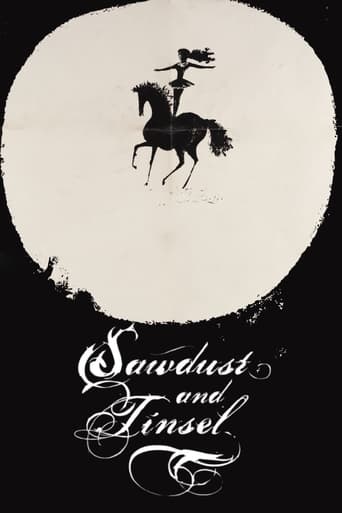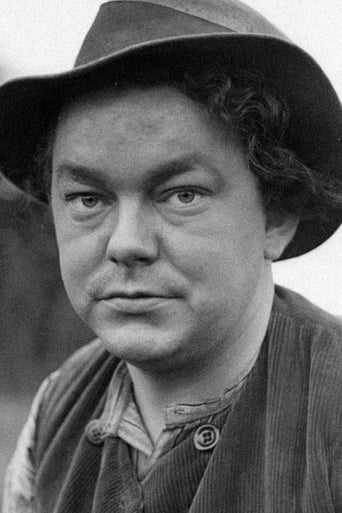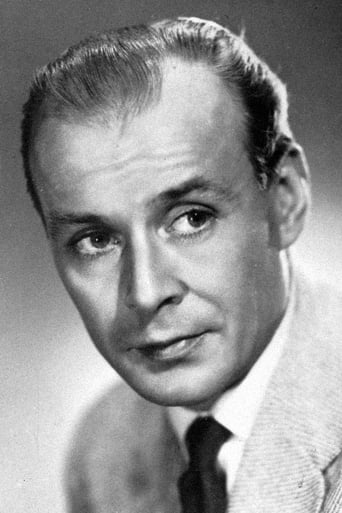Sawdust and Tinsel (1953)
The complicated relationships between a circus ringmaster, his estranged wife and his lover.
Watch Trailer
Cast


Reviews
What a freaking movie. So many twists and turns. Absolutely intense from start to finish.
The film was still a fun one that will make you laugh and have you leaving the theater feeling like you just stole something valuable and got away with it.
Watch something else. There are very few redeeming qualities to this film.
Good films always raise compelling questions, whether the format is fiction or documentary fact.
The film I selected to watch second during #SeptemBergman was Sawdust and Tinsel. Just as Summer with Monika, Sawdust and Tinsel was released in 1953, and was the second Ingmar Bergman film Woody Allen was exposed to, so I've taken the lead from him as far as beginning this project. I did not enjoy Sawdust and Tinsel nearly as much as Woody Allen did. This is going to be an entry in Ingmar Bergman's filmography that I appreciate, rather than enjoy. On an overcast and grim morning, the circus rolls into the town where the ringmaster's family lives. The ringmaster, Albert Johansson (Åke Grönberg) hasn't seen his wife or two sons in three years. Albert gives off the impression that he loves the nomadic life the circus offers whereas his wife, who hated that life, decided to stay behind and establish roots. Albert has since taken a mistress, Anne (Harriet Andersson) who is desperately against the idea of Albert visiting his estranged wife and sons, as she believes he will use the reunion as a way of getting out of the circus. Jealous, hurt, and looking for a way out, Anne visits another traveling group in the same town and is seduced by an actor who promises her a rich life because he is in possession of an expensive necklace. While Albert visits his wife and learns he is not welcome to return to his family, Anne finds out the necklace is worthless. Both are stuck in the same position as when the audience first meets them, broken and dejected, stuck with the circus and with each other.Several times in Sawdust and Tinsel, Bergman uses silent film techniques which so alter the tone of the film, I struggled to get back into the narrative each time we returned to the plot advancement. Typically, I enjoy methods like this, but they didn't work in Sawdust and Tinsel. The circus metaphor--where the emotions and deepest feelings of human beings are revealed was striking. Bergman's camera got increasingly closer to each subject as more of their desires were exposed. The film is a tough watch, full of humiliation and despair where we continue to see characters humiliated and broken in a worse manner than the previous character was humiliated and broken. The symbolism was nice, and Bergman, being the talented director he was, layers the film in subtlety never losing faith in his audience.
This 1953 Ingmar Bergman vehicle perhaps fails to reach the same heights as his later masterpieces but it still has interesting moments and some unique cinematography.The film depicts the transient life of a traveling circus troupe and the cost such a life has on their relationships. It also explores the relationships between different forms of art.Although it is unfashionable in academic circles to make distinctions between "high" and "low" art forms at the moment, the film does analyse the contrast between different art forms and attempts to dramatise the rivalry and power struggles between different sets of performers.The stark lighting and use of close-ups are the most interesting aspect of this production but the story itself is as banal as any circus act, with slow pacing and uninspiring characters, it proves to be a rare failure on the part of Bergman.The attempts at comedy fail and the usual bleak, austere settings so typical of Bergman's work do not work well in this case. Perhaps he was trying to subvert the usual expectations of a circus performance by showing the bleak, emotionally and financially impoverished lives of the performers but this does not really come across effectively. The film simply seems dismal and, ironically enough, by the end one feels that they would have better spent their time watching a real circus performance, irrespective of how low culture it is, than this film.
Less beloved by many critics than much of Bergman's best known work and I can understand why. The overly melodramatic main story of love and betrayal in a small-time circus is pretty banal stuff. But for me the film was saved by the beautiful images of the first Bergman/Sven Nyqvist teaming, and the short prologue piece – far braver and more experimental than the main body of the film itself – of a clown from the same circus and his humiliating love for an aging diva, It's so much more interesting than the very similarly themed main story that the device sort of backfires. Still, this is full enough with bravery, images and ideas, that it can compensate for its heavy- handed or over-the-top moments.
This is a fantastic early film made by the master of the psychological, Ingmar Bergman. This film is much easier to understand than say, Persona, Cries and Whispers, or the Seventh Seal, and therefore, I suggest this as a first-time introduction for anyone interested in learning more about his films and/or his filming technique.This movie is quite simply, a dream. The introduction sequence is a brilliant example of Bergman's work...we see a long shot of 5 horse carriages moving across the plains at dawn, which dissolves into a reflection of a single horse & carriage in the water below a bridge, which dissolves into a series of shots...windmills, foggy paths, the carriage driver and the finally, a fade into the carriage where our protagonist, Albert Johansson, sleeps with his girlfriend Anna. Bergman is the king of the dissolve...a style he no doubt picked up from 1920's German expressionism. Bergman's mise en scene is a blend of sequences which depict a very dreamlike orientation of our immediate surrounding.The result: We are passive observers, watching the all-too-real reality of our modern world subside into something very mysterious and surreal. Bergman's style removes time from the equation of film. Time, as we know it, takes a back-seat to objects, people, and places. Real life becomes more dreamlike than any dream, and the darkest and most mysterious corner of the universe becomes the human mind.This is a fantastic movie.







